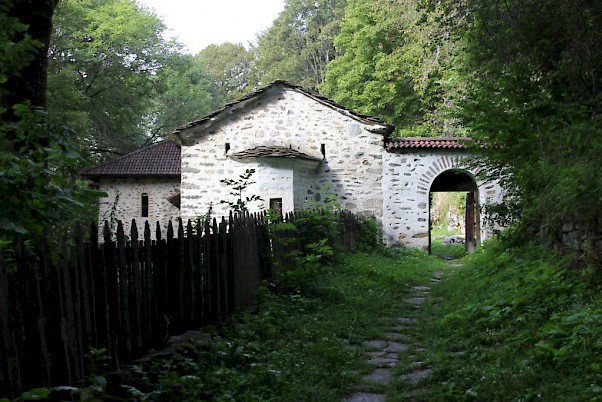
3 kilometers northwest of the Rila Monastery, on the pathway to the cave and the grave of st. John, is located the hermitage bearing the name of Saint Apostle and Evangelist Luke. It was set up in memory of Luke - st. John’s nephew, who at an early age came to Rila Mountain to live an ascetic life under the spiritual guidance of his uncle. According to the story, at this place Luke was bitten by a poisonous snake and passed away.
The church at the hermitage was built and painted between 1789-1799. The Ktetor was monk hajji Ignatius of Stara Zagora. It was finished at the time of priest-monk Gerasimus, Abbot of the Rila Monastery. It is architectured as a one-nave basilica, and consists of four compartments: Altar, Central Nave, Narthex and Antechamber. Its height is 3 meters, the width is 3 meters as well, and the length almost 15 meters. It is made of stone and mortar.
The apse of the temple was painted by the founder of the Bansko Iconographic School Toma Vishanov, known as Molera. The rest of the frescoes are the work of Christo Dimitrov - the father of Dimiter and Zahari Zograf. The frescoes are rich and of diverse thematics. Among the traditional scenes from the Gospel, here the images of the disciples of St. John of Rila - the saint Prochorus of Pchinsk, Gabriel of Lesnovo, Joachim of Osogovo, etc., line up. The fact that the painters set aside a special place for Bulgaria’s own hermits and martyrs expresses the national consciousness and self-esteem of the Bulgarians during the dark years of the Turkish yoke.